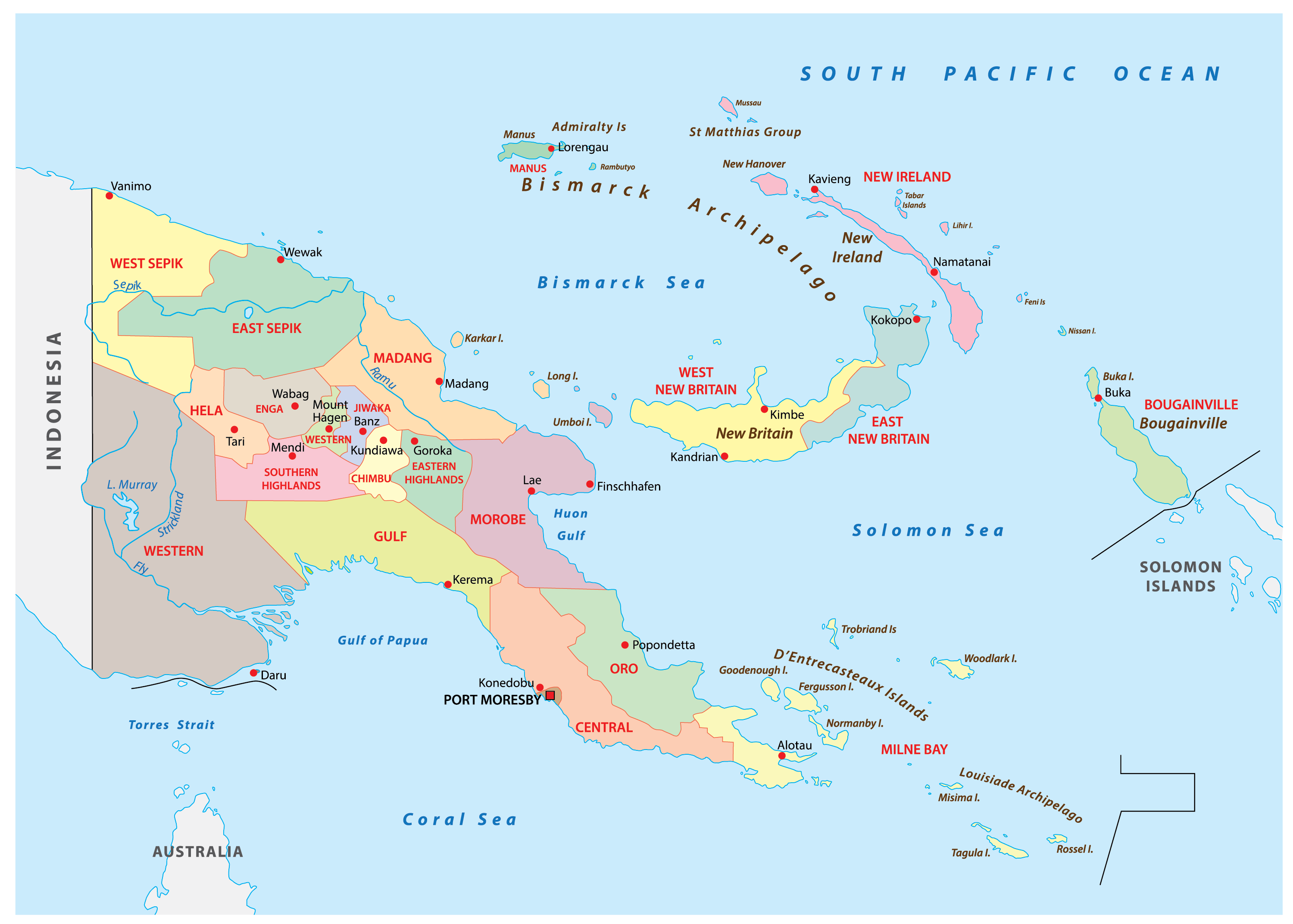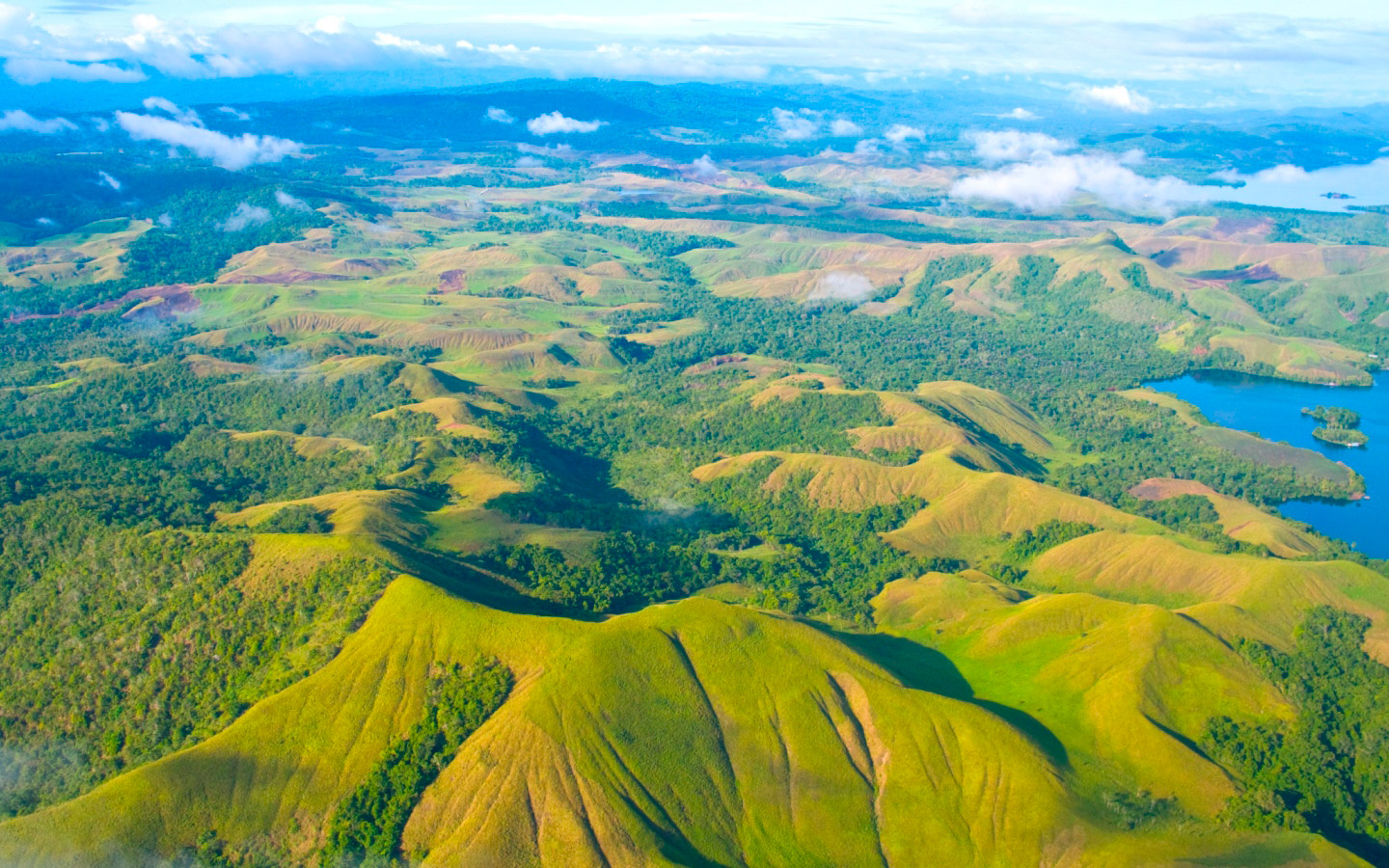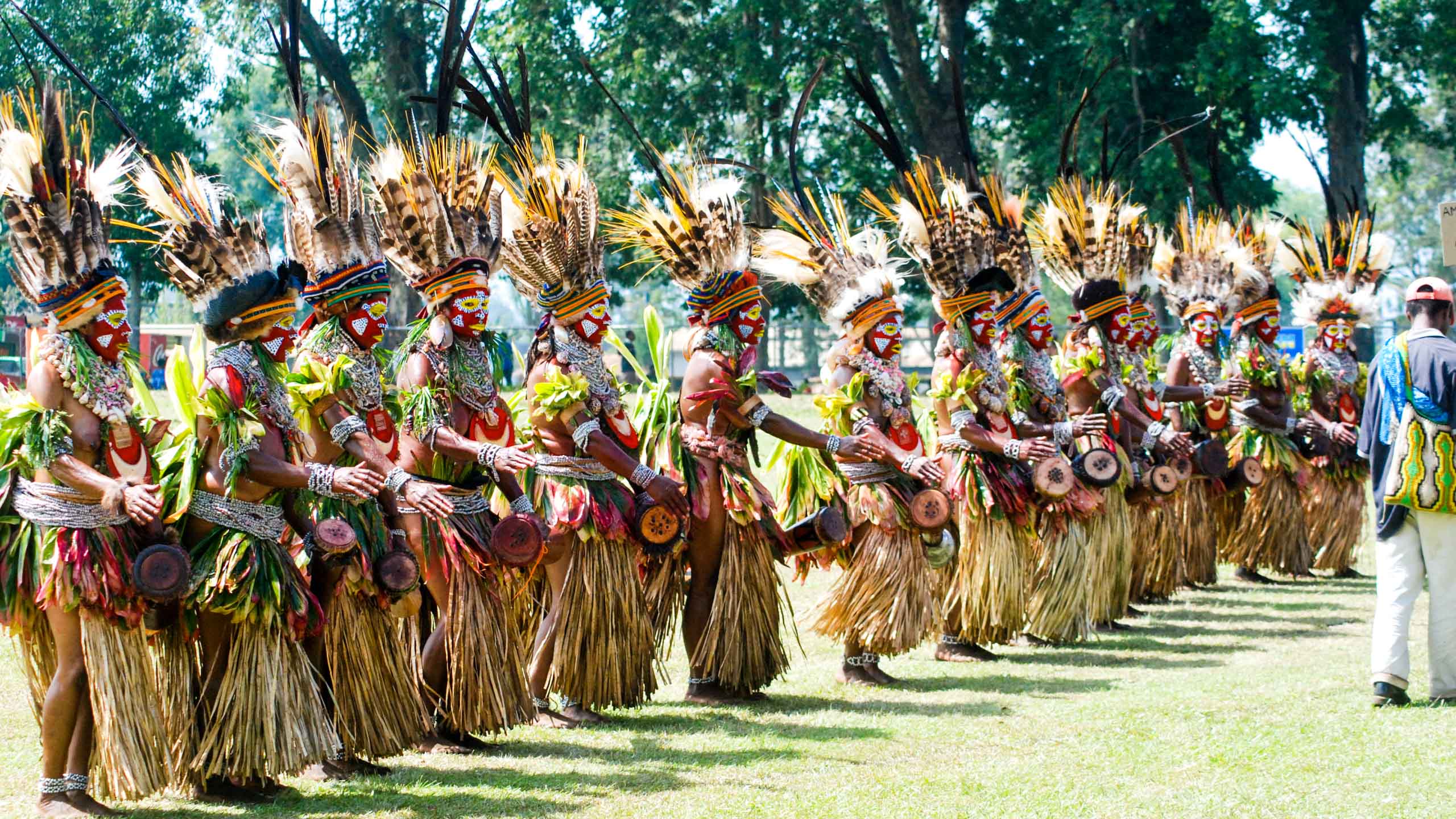Papua New Guinea is a place of immense cultural and biological diversity, known for it's beaches and coral reefs, spectacular rainforest and over a thousands of tribal groups.
Papua new Guinea or PNG, an island country in the southwestern pacific ocean, is a home to the third biggest forest in the world after the Amazon and the Congo. Just 160 km of the Queensland coast together with neighbouring Indonesia, It is in fact the second largest island in the world.
The Huli Wigmen Tribe
The Huli are a nomadic tribe from Southern Highlands of Papua New Guinea. The mountains and swampy valleys of southern highlands are there home for over a thousand years.
As the most remote part of the province, Tari is one of the new places in PNG where people still live in a very primitive manner and wear their traditional dresses on a daily basis. Clan and tribal loyalties are still very strong here. Pigs and gardening are the most important part of their life and tribal fighting is still a common occurrence.
Huli men are best known for their custom of wearing decorative woven wigs, that are used as a headdresses and decorated with bundles of multi-colored feathers during sing-sings (celebratory events). These wigs are usually made by a unique clan known as the Huli Wigmen.
In there culture, boys live with their mother until they reach the age of seven. Thereafter, they live with their fathers to learn certain skills such as arrow and bow hunting, building mud walls and houses. When they are 14 years old it's the time for them to go to wig school. At this school, they learn to make the famous wig for their own hair. The Huli men wear these wigs on the ceremonial rituals or on a daily basis. This process is one of the most important rituals in the life of a Huli. While in the schools students have to follow the strict rules, they have to keep their hair wet at least three times a day, that is why they usually live near the area where they have constant access to water. They also have to follow a diet where certain type of food is not allowed such as pig's hear, pig's fat and spicy food. On the graduation day, the men paint their faces with yellow ochre and leave to find a woman to marry.
Sing-Sing, a cultural show in Papua New Guinea
Each year the Huli are present at the sing-sing, a festival and a ceremony in which the various tribes from the area participate. It's a meeting where all the chiefs gather to discuss their issues, but also to present their own culture and strengths as a tribe.
The Huli are a real showmaster, they wear their special wigs and decorate their faces with yellow and red paint. When they perform, they leave a great impression behind.
Being a major tourist attraction, people enjoy the shows that are presented in the spirit of peaceful gatherings. you'll see the bight colours in the form of the decorations, costumes and the amazing body paints, headdresses made with bird's feathers, necklaces decorated with shells and animal teeth and skirts made of grass and leaves.




Unknown | February 26, 2021 at 10:22 AM
Amazing write up!👍👍
Unknown | February 26, 2021 at 10:41 AM
Nice info!
Unknown | February 26, 2021 at 10:44 AM
Great share
Unknown | February 26, 2021 at 10:50 AM
Great. Very important information
Unknown | February 26, 2021 at 10:59 AM
On point 💯
Unknown | February 26, 2021 at 11:00 AM
Good work
Keep it up
Unknown | February 26, 2021 at 11:13 AM
Cool👍👍
Unknown | February 26, 2021 at 11:14 AM
Very informative
Lalit Nimesh | February 26, 2021 at 11:36 AM
PNG 🔥🔥...well explained
SPORT6L7I8F9E | February 26, 2021 at 6:06 PM
🔥🔥 kya baat ha nice yr
Unknown | February 26, 2021 at 8:33 PM
Amazing👏👏
Unknown | February 27, 2021 at 12:06 AM
👍👍
Unknown | February 27, 2021 at 4:23 AM
Informative👌🏼
Unknown | February 28, 2021 at 2:48 AM
Amazing 😍❤️